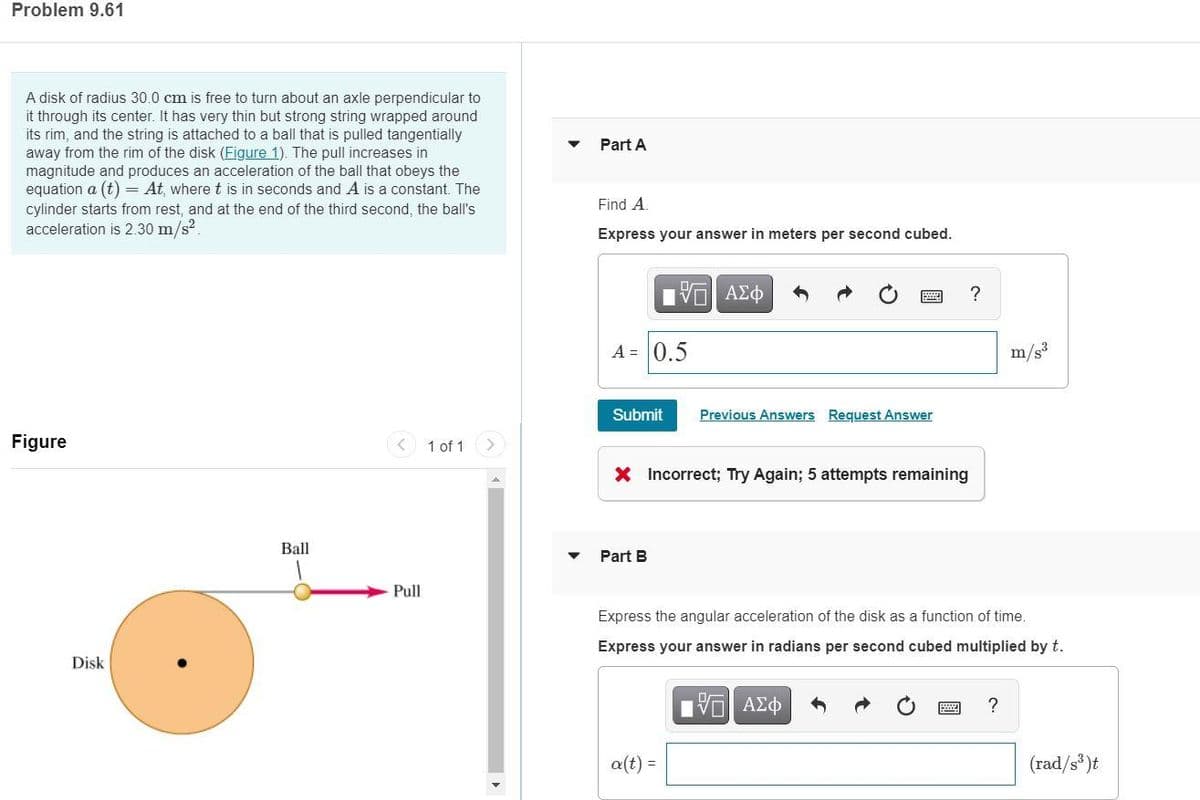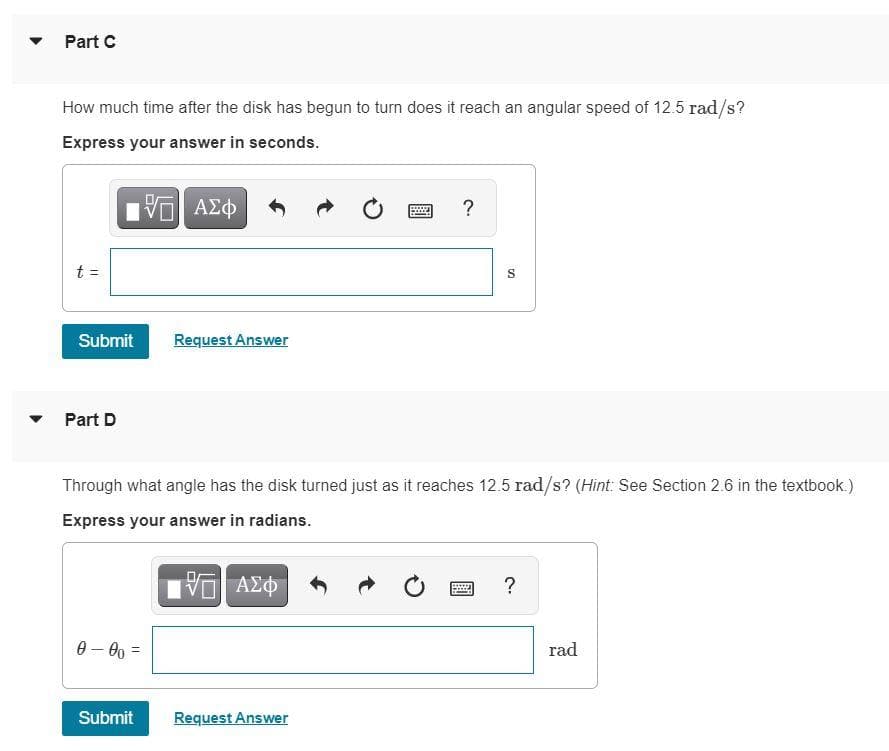A disk of radius 30.0 cm is free to turn about an axle perpendicular to it through its center. It has very thin but strong string wrapped around its rim, and the string is attached to a ball that is pulled tangentially away from the rim of the disk (Figure 1). The pull increases in magnitude and produces an acceleration of the ball that obeys the equation a (t) = At, where t is in seconds and A is a constant. The cylinder starts from rest, and at the end of the third second, the ball's acceleration is 2.30 m/s? Part A Find A Express your answer in meters per second cubed. VO AEO ? A = 0.5 m/s3 Submit Previous Answers Request Answer igure < 1 of 1> X Incorrect; Try Again; 5 attempts remaining Ball Part B Pull Express the angular acceleration of the disk as a function of time, Express your answer in radians per second cubed multiplied by t. Disk a(t) = (rad/s )t
Angular speed, acceleration and displacement
Angular acceleration is defined as the rate of change in angular velocity with respect to time. It has both magnitude and direction. So, it is a vector quantity.
Angular Position
Before diving into angular position, one should understand the basics of position and its importance along with usage in day-to-day life. When one talks of position, it’s always relative with respect to some other object. For example, position of earth with respect to sun, position of school with respect to house, etc. Angular position is the rotational analogue of linear position.
Please solve a to d part if you thought 3 part for guide line then skip it and if you da then I'll give negative feedback


Trending now
This is a popular solution!
Step by step
Solved in 2 steps with 2 images









